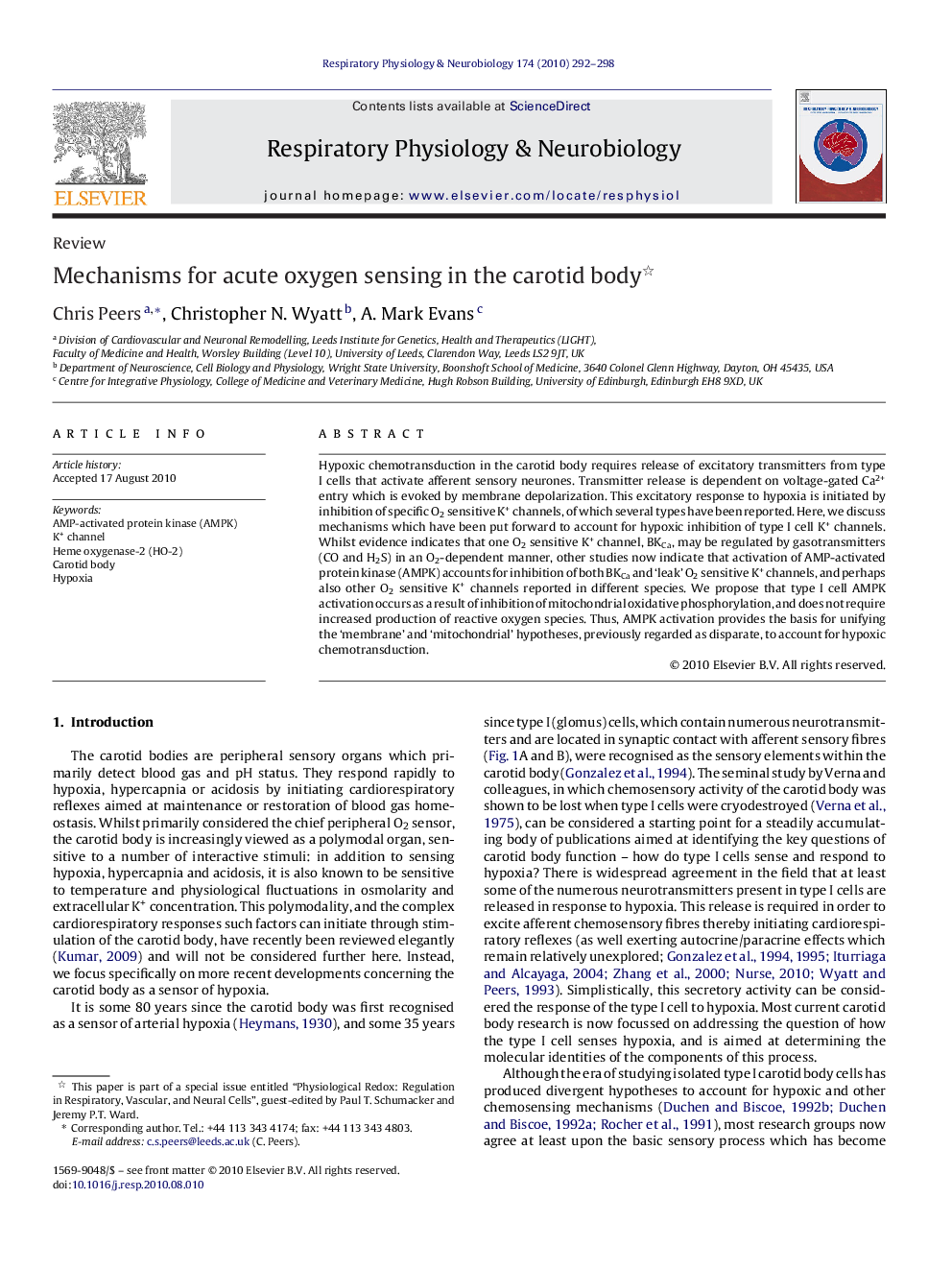| کد مقاله | کد نشریه | سال انتشار | مقاله انگلیسی | نسخه تمام متن |
|---|---|---|---|---|
| 2847550 | 1167372 | 2010 | 7 صفحه PDF | دانلود رایگان |

Hypoxic chemotransduction in the carotid body requires release of excitatory transmitters from type I cells that activate afferent sensory neurones. Transmitter release is dependent on voltage-gated Ca2+ entry which is evoked by membrane depolarization. This excitatory response to hypoxia is initiated by inhibition of specific O2 sensitive K+ channels, of which several types have been reported. Here, we discuss mechanisms which have been put forward to account for hypoxic inhibition of type I cell K+ channels. Whilst evidence indicates that one O2 sensitive K+ channel, BKCa, may be regulated by gasotransmitters (CO and H2S) in an O2-dependent manner, other studies now indicate that activation of AMP-activated protein kinase (AMPK) accounts for inhibition of both BKCa and ‘leak’ O2 sensitive K+ channels, and perhaps also other O2 sensitive K+ channels reported in different species. We propose that type I cell AMPK activation occurs as a result of inhibition of mitochondrial oxidative phosphorylation, and does not require increased production of reactive oxygen species. Thus, AMPK activation provides the basis for unifying the ‘membrane’ and ‘mitochondrial’ hypotheses, previously regarded as disparate, to account for hypoxic chemotransduction.
Journal: Respiratory Physiology & Neurobiology - Volume 174, Issue 3, 31 December 2010, Pages 292–298